

TRAFFORD PARK
Trafford Park in Manchester was a major focus for engineering at the beginning of the 20th century. The following photographs show the building of the Westinghouse factory that was later to become Metropolitan Vickers, then GEC, then GEC Alsthom and finally Alstom. This is a brief pictorial history of Trafford Park Works which closed on 30th June 2000
| The site for Trafford Park Works was purchased in 1899 by George Westinghouse. This photograph shows the laying of the Main Office foundation stone on 3rd August 1901. On the day however, George Westinghouse was ill, and the Lord Mayor of London laid the stone, assisted by the Lord Mayor of Manchester. The arched windows of the ground floor of the Main Office are clearly visible to the right. | 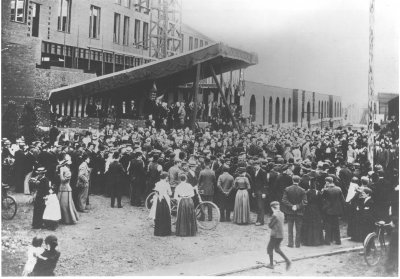 |
 |
The renovated and cleaned foundation stone today. |
An aerial view in 1902, taken from a balloon, as the factory nears completion. Materials used:
The mezzanine floors were built up from 12"x2" planks of Douglas Fir laid on their edges. This was imported from Canada and exported back as reclaimed timber when the factory was demolished in 1996. |
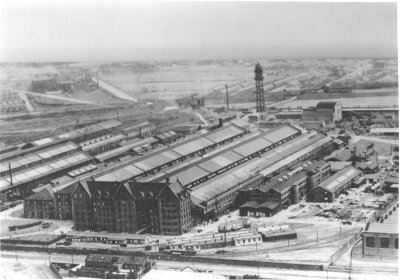 |
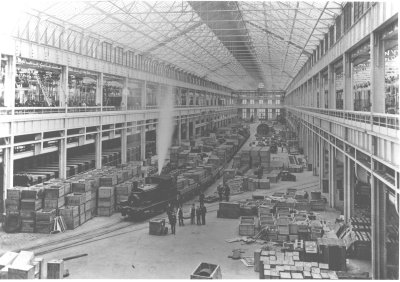 |
Machine Tools arriving by train into D Aisle in 1902. |
| The foundry in the early 1900's | 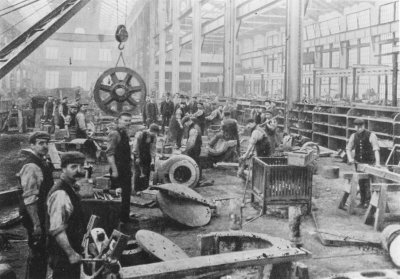 |
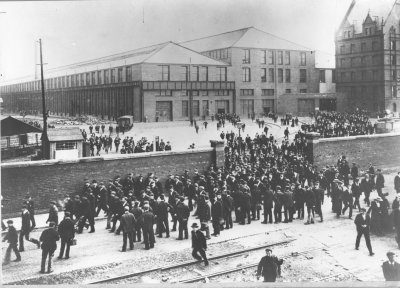 |
North Gate in 1903. Note the railway lines which run down what is now the wide central reservation of Westinghouse Road. |
| Manufacture of motor armatures is undertaken by the 'Mica Ladies' in 1906. | 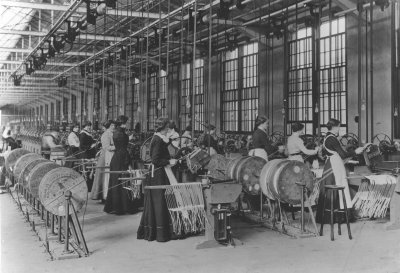 |
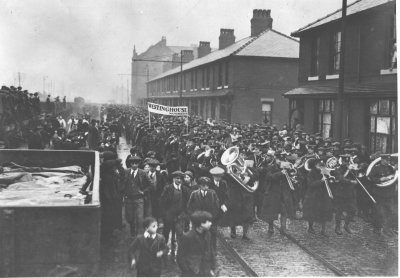 |
By 1914 there were over 5000 employees but by the end of the year over a third were enlisted in HM Forces. 3519 eventually went to war; 304 died. |
| In 1917 British Westinghouse became a British registered company and in 1919 the name Metropolitan-Vickers Electrical Company Limited was adopted. This is a view of the water tower from the south in about 1920. The familar hexagonal MV logo is visible on the tower. Below are the words COSMOS LAMPS. | 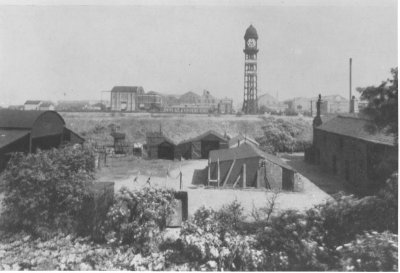 |
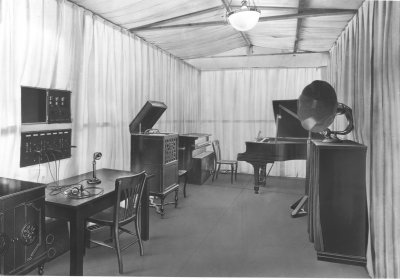 |
In 1922 there occurred one of the outstanding events of the century - the birth of broadcasting in the UK. The head of the company's research department, Arthur Fleming, had taken a keen interest in telecommunications, and was instrumental in securing a licence for a Manchester station with the call-sign 2ZY. Shortly after that the Post Office granted a two year licence to the British Broadcasting Company - a collective name given to the six large British companies, of which Metropolitan Vickers was one - this was the forerunner of the modern BBC. The Research Department at Trafford Park transmitted the first BBC programme in the North from this transmitting station. Live music was played by a 12-piece orchestra. |
| The first Apprentice Training School. | 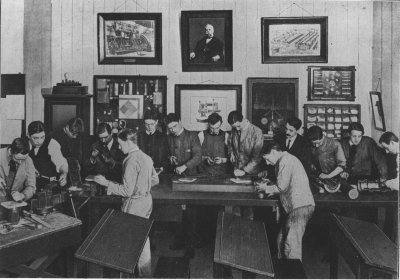 |
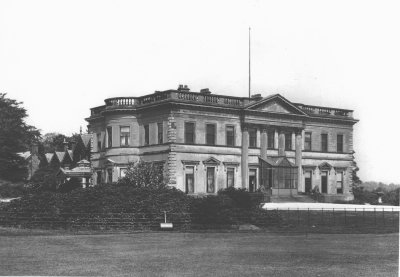 |
Trafford Hall, shown here, was destroyed in the blitz in 1941 and the cast iron water tower at the south end of the site was demolished because it was too good a landmark for German bombers. |
| An aerial view of the site in 1955. Note that Mosley Road Works is included top left and that the West Office Block now has its North Wing. | 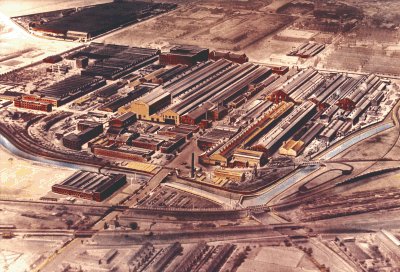 |
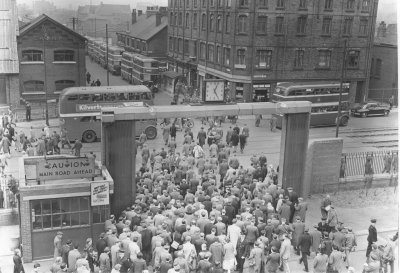 |
A view from inside the North Gate across Westinghouse Road and down Third Avenue at finishing time in 1966. The buildings on the corners were demolished in the mid 1990s. In the late 60's, the General Electric Company, English Electric and Associated Electrical Industries merged to become GEC. The merged companies also embrace other famous names such as Marconi, Elliott Automation and British Thomson-Houston. |
| In the 70's and 80's heavy investment was made in the latest manufacturing technology to ensure that the world's demand for steam turbines could be met. Contracts included Peterhead in Scotland, Castle Peak in Hong Kong and San Onofre in the USA. | 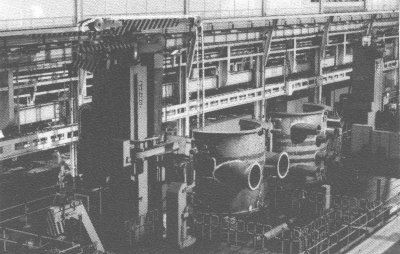 |
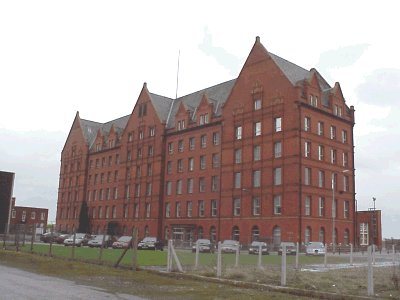 |
Trafford Park Works as it was in early 2000; all that remains of the original buildings is the Main Office and an isolated part of the factory that is dedicated to Steam Turbine Repairs. The site closed for business on 30th June 2000 but a few staff will remain until the end of July to ensure that closure takes place smoothly. |
There is an end to the Trafford Park Works story here.